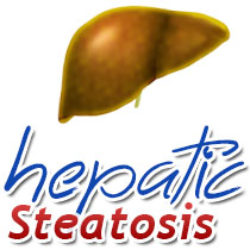Hepatic steatosis, also known as fatty liver disease, is an affliction that strikes approximately twenty percent of the adult population. It is associated with obesity (75% of obese people have this disorder) and with alcoholism or excessive alcohol consumption.
It takes the form of fatty deposits forming in the liver. It can lead to complications including liver cancer, fibrosis of the liver and cirrhosis of the liver. It is usually asymptomatic and can be treated with diet, exercise, and (where appropriate) reduced alcohol consumption or abstinence from alcohol.
The disease is diagnosed in two forms, called alcohol-
ICD-
The International Statistical Classification of Diseases and Related Health Problems, also known as the ICD classification system, includes chronic alcoholic and nonalcoholic hepatic steatosis as diseases of the digestive system (520-
Hepatomegaly
Hepatomegaly, or enlarged liver, can sometimes be associated with hepatic steatosis, although it also has other causes including infections, toxins, cancers, and alcoholism (the latter also being a common cause of fatty liver disease, of course). Sometimes an enlarged liver with its symptoms can lead to a diagnosis of hepatic steatosis. However, very often hepatic steatosis is asymptomatic and is not associated with hepatomegaly. Diagnosis in that case is less obvious, and generally results from routine blood work revealing an elevation of liver enzymes.
Diagnosis
The first indication of hepatic steatosis is usually an elevation of liver enzyme
levels detected through a blood test. Afterwards, a screen is used to eliminate hepatitis, which can also cause elevated liver enzymes (and is usually a much more serious illness).
The next step is a visual diagnosis using ultrasound or other imaging technology, which can reveal the presence of fatty deposits in the liver. The final step is to assess the patient’s alcohol intake and so differentiate between alcoholic and non-
Because liver conditions can be the result of very serious and potentially life-
Treatment
Treatment of hepatic steatosis or fatty liver generally does not involve drugs, surgery, or any other invasive medical procedures but relies on diet and other lifestyle measures.
If the disease is alcohol-
Hepatic steatosis is on the increase in the population. The most likely explanation for this is that it arises from the increase in obesity. Obesity is also associated with other chronic problems that are on the rise, including diabetes and cardio-
